Introduction
The head and the neck are more than merely distinguishing traits that people use to recognize their close friends and family members. The carotid and vertebral arteries are responsible for supplying the head and neck with the overwhelming bulk of the body’s blood flow. The internal and external carotid arteries, thyrocervical trunk, vertebral arteries, cervical plexus, cranial nerves, and head and cervical lymph nodes are the head and neck’s most significant pathways and networks. Therefore, this essay provides the anatomy of the head and neck blood circulation through the above-mentioned blood vessels.
Carotid Arteries
The right subclavian artery is the other segment of the innominate trunk from which the right typical carotid passage emerges. The left common carotid artery is immediately branched from the aortic arch. The left and right common carotid arteries proceed up the neck, laterally to the larynx and esophageal, and do not separate in the neck. The carotid arteries divide at the region of the superior edge of the thyroid cartilage (C4) into the external and internal carotid arteries (Charlick & Das, 2021). This divergence happens in the carotid triangular anatomical region. The common carotid and internal carotid arteries, termed the carotid sinus, are moderately dilated in this region and are crucial for gauging and controlling blood pressure.
The internal stenosis artery ascends the neck from the common carotid artery, traveling caudally to the temporomandibular neck and laterally to the fibrous capsule of the ear. Within the oropharynx, the artery terminates and divides into the cursory temporal artery and the pharyngeal artery. It produces a total of six branches: the ascending pharyngeal, superior thyroid, posterior auricular, facial, occipital, and lingual arteries as shown in figure 1 (Charlick & Das, 2021). The internal carotid arteries supply no components in the neck, which enter the nasal mucosa via the carotid channel in the petrous portion of the skull base.
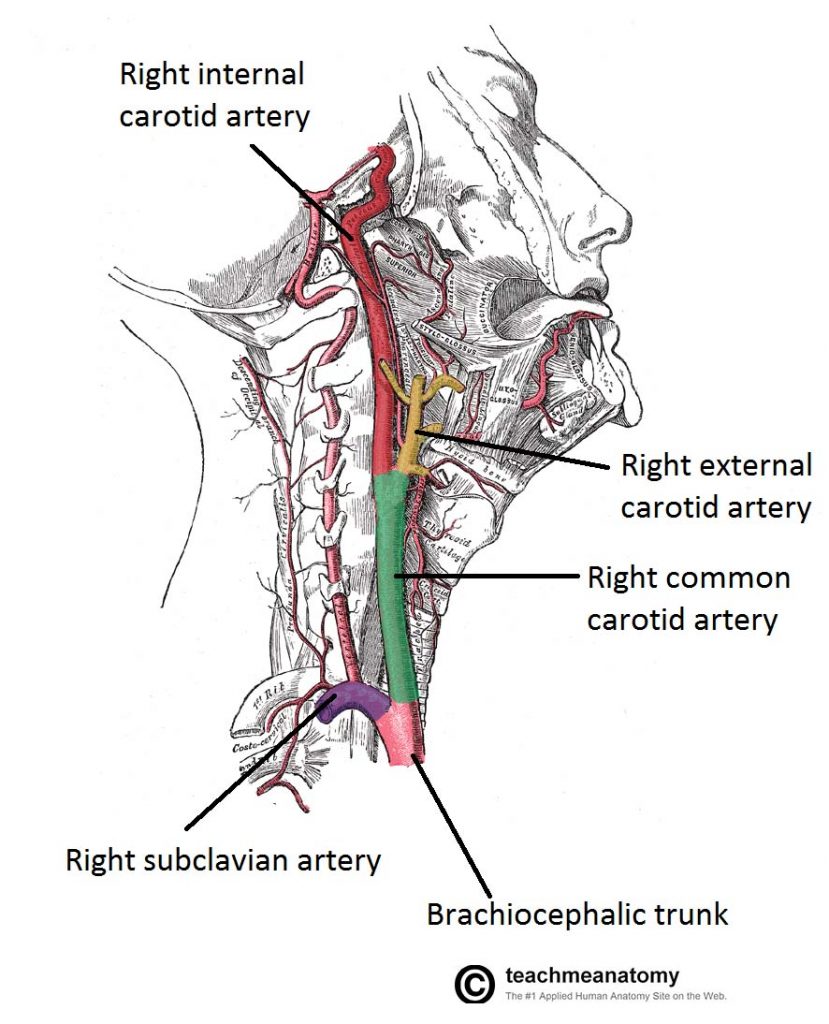
Vertebral Arteries
The vertebral arteries are bilateral tubes that emerge just dorsal to the front scalenes from the saphenous arteries. They traverse the posterior part of the neck, penetrating through the foramen transversarium in the lateral aspect of the vertebral column (Saw et al., 2019). The vertebral tubes enter the skull through the foramen magnum and merge to produce the basilar artery, which supplies the brain. They distribute numerous meningeal, musculoskeletal, and spinal extensions to surrounding tissues along their journey (Saw et al., 2019). The vertebral and carotid internal flows are not entirely distinct constructs since they link at the cerebral arterial circle, situated at the bottom of the skull as illustrated in figure 2.
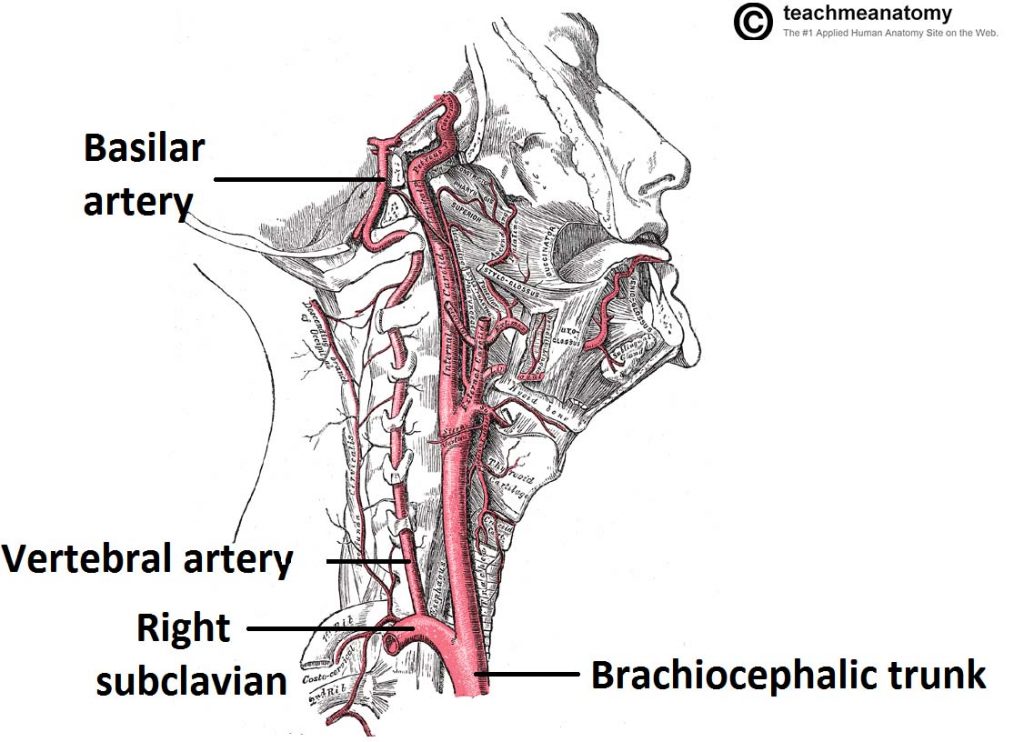
Thyrocervical Trunk
The thyrocervical trunk, as shown in figure 3, is an additional main neck artery. In addition to its genesis from the subclavian artery, it gives credence to the suprascapular artery, inferior thyroid artery, transverse cervical artery, and ascending cervical artery (Pérez-García et al., 2018). These tributaries supply the trapezius, thyroid gland, levator scapulae, sternocleidomastoid, rhomboids, lateral muscles of the upper neck, and surrounding tissues with fresh blood (Pérez-García et al., 2018).
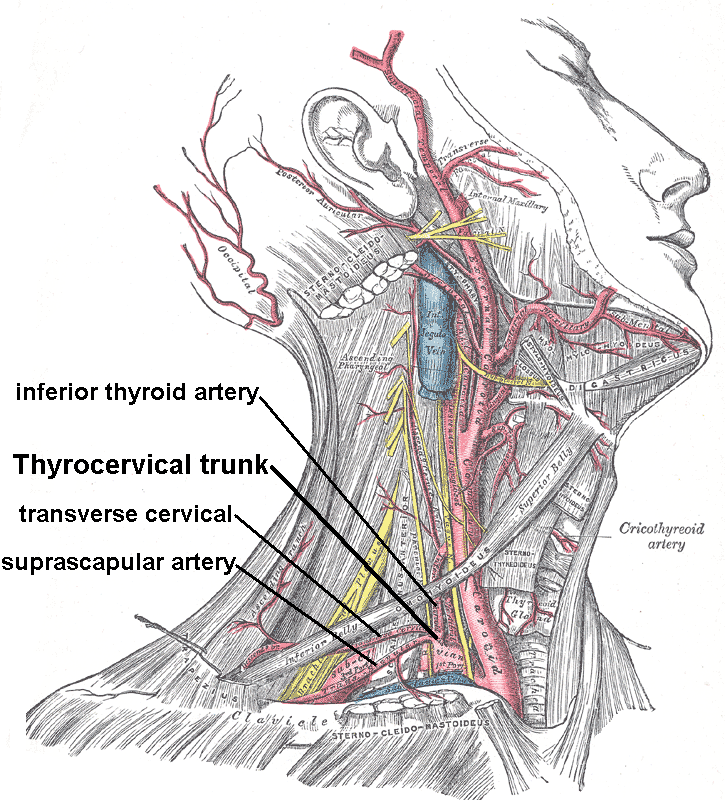
Cervical Plexus and the Head Nerves
The spinal nerves that run from the C1 to the C5 level combine to form the cervical plexus, sending the motor and sensory extensions to the neck and head as shown in figure 4 and 5. Within the anterior cervical region of the neck is a neuronal loop known as the ansa cervicalis. It is comprised of five branches that may be found in the carotid triangle. These branches are the thyrohyoid, omohyoid, sternothyroid, geniohyoid, and sternohyoid nerves (Brown & Dellon, 2018). The lower occipital, larger auricular, transverse cervical and supraclavicular nerves are all perceptive branches, whereas the ansa cervicalis, phrenic, rhomboids, and serratus anterior nerves are illustrations of functional divisions.
Cranial nerves are the 12 peripheral nervous system neurons that arise from the skull’s foramina and perforations. The position of their skull exit dictates their number order (1-12) since they all originate from the brain’s nucleus (Romano et al., 2019). The twelve cranial nerves in their order number are listed herein: olfactory, optic, oculomotor, trochlear, trigeminal, abducent, facial, vestibulocochlear, glossopharyngeal, vagus, accessory, and hypoglossal (Romano et al., 2019). The first two begin in the brain’s frontal lobe, whereas the following ten emerges from the hypothalamus.
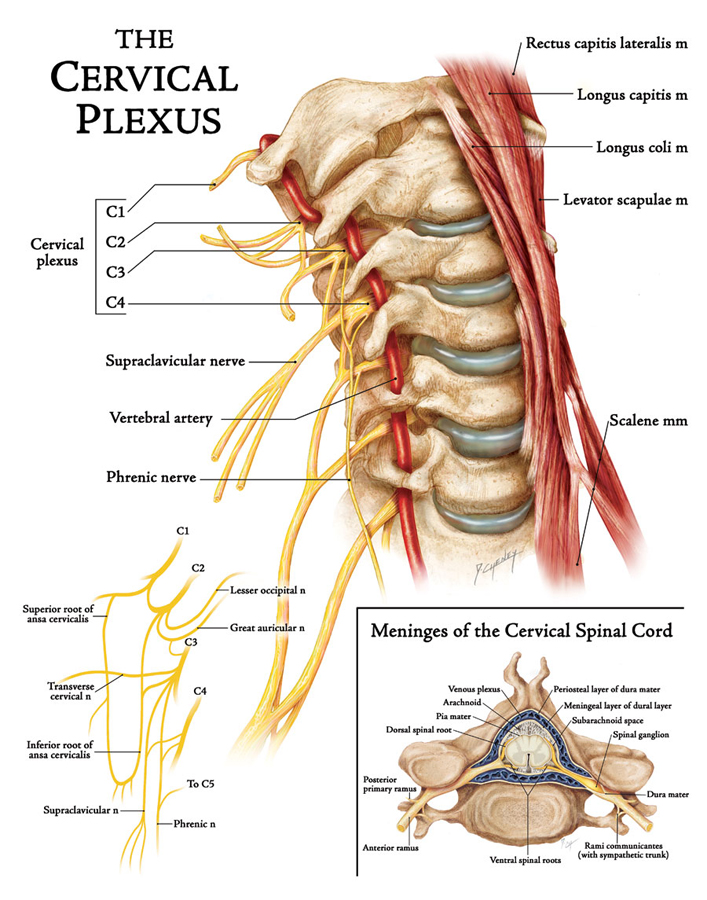
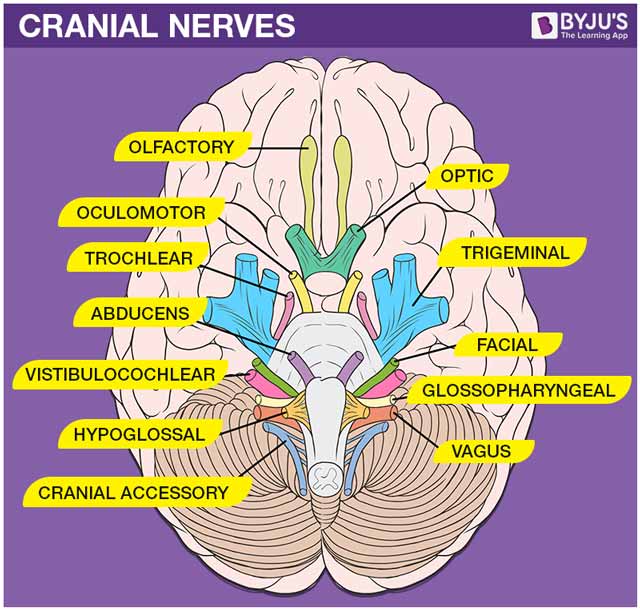
Head and Cervical Lymph Nodes
There are various lymph node groupings or assemblages in the neck and head. They are essential for lymphatic drainage and the normal functioning of the immune system. The lymph nodes in the forehead are grouped into the following factions: the submental, submandibular, parotid, mastoid, fascial, sublingual, and occipital (Norris & Anzai, 2022). Each group is accountable for emptying the nearby structures. Additionally, the lymph nodes of the neck are grouped. Nonetheless, rather than being grouped, they form three primary networks: the upper horizontal, anterior cervical, and lateral cervical (superficial and deep) channels (Norris & Anzai, 2022). Each set, like the head, empties the adjacent structures as elaborated in figure 6.
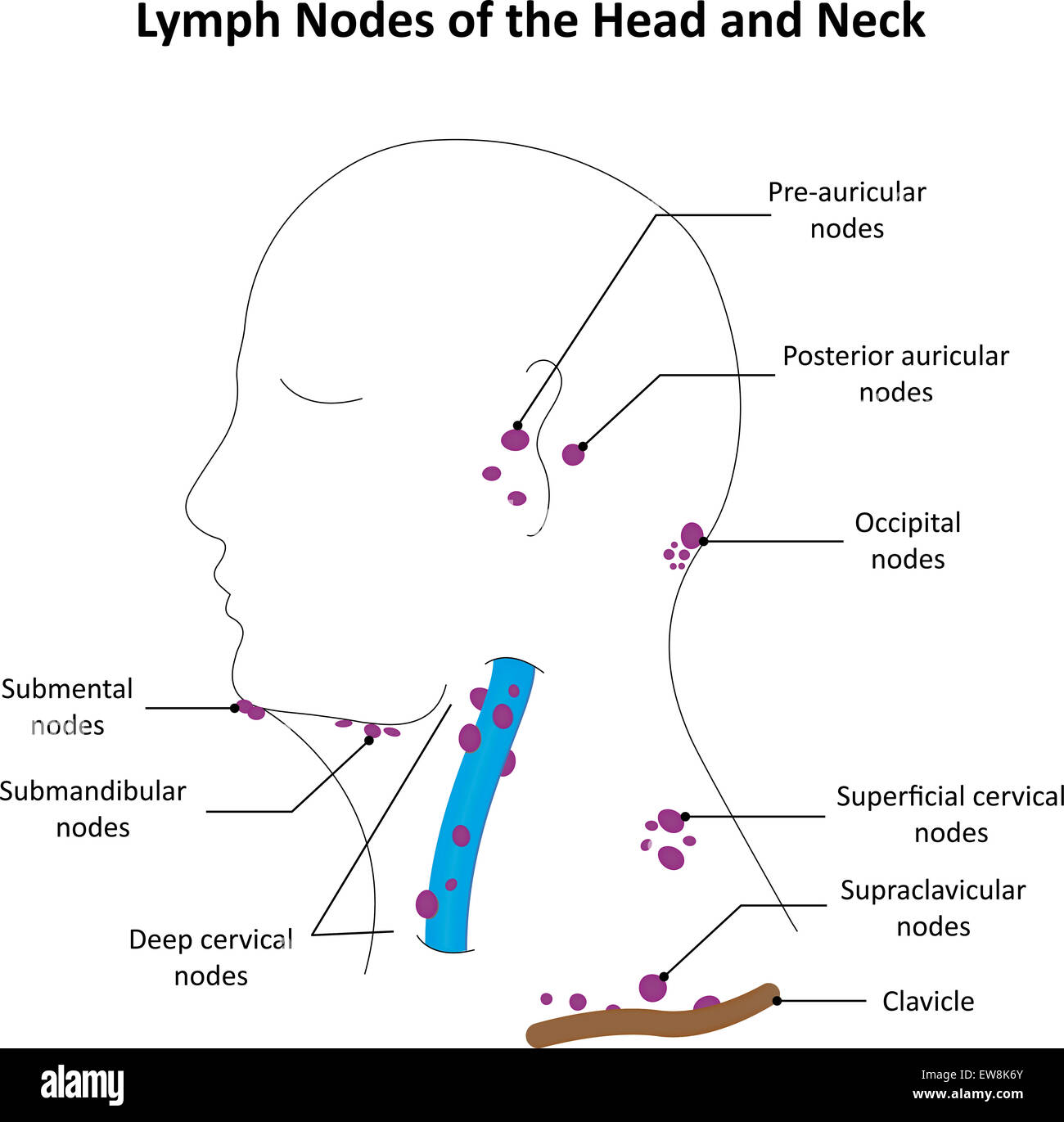
Conclusion
The anatomy of blood circulation in the head and neck provides a useful insight into some of the vital arteries and nerves that play a role in ensuring efficient and effective blood supply within the human head and neck. The arteries and nerves involved in blood supply are the internal and external carotid arteries, thyrocervical trunk, vertebral arteries, cervical plexus and cranial nerves, and head and cervical lymph nodes.
References
Brown, D. L., & Dellon, A. L. (2018). Surgical approach to injuries of the cervical plexus and its peripheral nerve branches. Plastic and Reconstructive Surgery, 141(4), 1021-1025.
Charlick, M., & Das, J. M. (2021). Anatomy, Head and Neck, Internal Carotid Arteries. In StatPearls. StatPearls Publishing.
Norris, C. D., & Anzai, Y. (2022). Anatomy of neck muscles, spaces, and lymph nodes. Neuroimaging Clinics, 32(4), 831-849.
Pérez-García, C., Malfaz, C., del Valle Diéguez, M., Gil, F. F., Lorente, J. S., Boyra, M. E., Leyte, M. G., Pérez-Higueras, A., & Castro-Reyes, E. (2018). Embolization through the thyrocervical trunk: Vascular anatomy, variants, and a case series. Journal of NeuroInterventional Surgery, 10(10), 1012-1018.
Romano, N., Federici, M., & Castaldi, A. (2019). Imaging of cranial nerves: A pictorial overview. Insights into Imaging, 10(1), 1-21.
Saw, A. E., McIntosh, A. S., Kountouris, A., Newman, P., & Gaida, J. E. (2019). Vertebral artery dissection in sport: A systematic review. Sports Medicine, 49(4), 553-564.